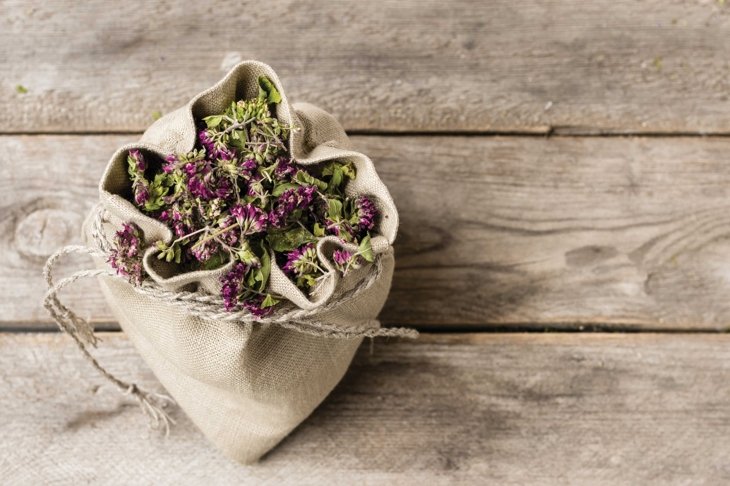
Watching your garden die in the fall is hard enough, but losing your herbs is almost too much to bear. Drying them is very simple! Read on to find out how.
Just because our herb gardens go dormant in the winter doesn’t mean we have to resort to store-bought seasonings. It\’s surprisingly easy to preserve fresh herbs; learning a few modern tips and reviving some traditional tricks will extend the life of our savoury bounty all year long.
Growing the flavour in
“The best growing conditions for herbs is neglect!” says Evelyn Coggins, a herbal practitioner in Pemberton, BC. In general, herbs prefer hot, dry conditions and not too much water, she explains.
And while many people prefer to plant their herb gardens in neat little rows with charming markers identifying the genus and species, Coggins warns, “Don’t be so nice to [your]. Let them fight for space among the weeds so they taste better.” According to Coggins, plants that must struggle for survival have the strongest flavours “because they have the highest concentration of survival chemicals.”
Why bother preserving?
Parsley, sage, cilantro, basil, mint, rosemary, thyme, and dill are some of the herbs most commonly grown in culinary gardens. It’s fun to pluck some homegrown basil to layer on grilled pizza or cut a sprig of rosemary to flavour summer potatoes. What many don’t realize is how easy and worthwhile it is to harvest herbs after the plants die down.
Old-fashioned air drying
One of the easiest and oldest methods of preserving herbs is to air dry them. Start harvesting before the herbs begin to flower, otherwise the blossoms will take away much of the flavour from the leaves. The best time to take cuttings is early in the day, after the morning dew and before the afternoon sun. There’s no need to wash herbs if they’re clean. If they contain dust or dirt, give them a rinse and lay flat to dry completely before preserving.
After gathering the herbs, assemble in small, loose bunches (about the size a child might pick for mom) and insert them upside down in a brown paper bag so the stems are at the top and the herbs don’t touch the bottom. Close the bag around the stems and secure with a twist tie.
Make some room in a dark, warm, dry place such as a closet (as light destroys enzymes). Herbs should be dry after about two weeks. Store them in glass jars or use scissors to chop into small pieces or a coffee grinder to pulse into a powder.
Herbs that air dry best include sage, thyme, dill, parsley, lavender, marjoram, oregano, and rosemary. Basil, tarragon, and mint are prone to mold, which brings us to our next method.
“No-time flat” oven drying
If you can’t wait to enjoy your herbs, you can use a quick method that will give you almost instant results. Be forewarned that some flavour might be lost this way.
Spread herbs out on a clean baking sheet and dry at the oven’s lowest possible temperature setting. You can leave the oven door slightly ajar to encourage air circulation. Turn often for even drying and to prevent burning. Check every hour for crispness. Herbs may take up to three to four hours to dry completely.
Basil, parsley, thyme, tarragon, and dill preserve well with the oven method.
Freeze for fresh-picked flavour
Freezing is a very simple way to preserve herbs. Coggins advises us to wash the cuttings, dry them, roll them up in parchment paper, and freeze them in airtight, freezer-safe containers. Labelling bags for quick identification allows us to simply reach into the freezer and grab whatever herbs we need to flavour autumn and winter soups and stews, and season meat and fish.
Freezing herbs in water in ice cube trays is another popular method. Coggins urges us to keep in mind that fresh herbs from the freezer contain water, so the flavour will be diluted. When following a recipe, “you would use a tablespoon of fresh herb as opposed to a teaspoon of dried, because it’s more concentrated.”
Nearly any herb can be preserved by freezing. Herbs with high water content such as lemon balm, tarragon, basil, and mint fare especially well.
Increasing the use of culinary herbs in everyday cooking, whether fresh, dried, or frozen, will improve the nutritional quality of our food and be more beneficial to our health, explains Coggins. This summer, let’s preserve our harvests of healthy herbs and savour them all year long.
Saving seeds
Try your hand at preserving herb seeds for planting the following year or using in recipes.
- Let your herbs flower and develop seed heads.
- When they begin to turn yellow but haven’t yet started dropping their seeds, cut the stems and use the old-fashioned air drying method mentioned previously in this article. The seed heads should only take a week to mature and fully dry.
- Give the bag a shake every few days to loosen seeds.
- After collecting the seeds and discarding the rest of the plant, keep the seeds in a glass jar in a dark cupboard.
Fennel, dill, and coriander seeds are most commonly used for cooking.
Flavour combinations
Some tastes are meant to be paired together. Surprise your palate with these winning herb combinations!
Dried herbs
Combine basil, bay, garlic, marjoram, oregano, and thyme in cooked dishes.
Fresh herbs
Combine dill, garlic, chives, parsley, and basil to flavour uncooked dishes..
Bouquet garni
Combine parsley, thyme, and bay.
